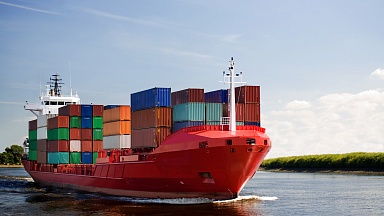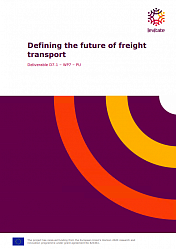China-Europe logistics market
Demand outlook
-
According to Bloomberg poll, expectations for the European economy in 2025 are deteriorating. Challenges with energy supplies and a decline in export competitiveness are intensifying pressure on industry, trade, and logistics. Some European logistics companies, particularly those servicing the automotive sector, are feeling the strain and are reducing their workforce. DVZ reports on one such case involving BLG Logistics Group.
-
Deflationary pressure in China threatens a decline in consumer demand [Bloomberg]. New government stimulus measures have had limited success in addressing the situation, which could negatively affect China’s import demand. The expansion of Chinese car manufacturers will be constrained by trade barriers.
-
The Middle corridor (TITR) continues to attract freight flows from China — in December, its share reached 18%.
-
According to rail freight market participants on the China-Europe-China route surveyed by Railfreight, the outlook for 2025 remains neutral. Also, TITR is unlikely to become a full-fledged alternative to the corridors via Russia before 2030. The key challenges for the next five years include geopolitics, competition with maritime transport, and EU policies regarding China.
-
In January, ahead of the Chinese holidays, demand for freight from China to Europe is expected to be high. As a result, ocean shipping lines have significantly increased their capacities on the route (+23% — according to JOC data). A traditional seasonal decline is anticipated in February.
Freight rate trends
-
Rail freight rates for the major China-Europe routes (SOC) have decreased by 6-7% over the past month. The average rate ranges from $5 800 (Chengdu, Chongqing) to $7 300/TEU (Shenzhen). Container lease rates have dropped by 10%.
-
Ocean freight rates on the Asia-Europe route remain volatile: spot rates are falling due to increased capacity and «price wars» yet they remain at elevated levels. Long-term contract rates have risen by 52% YoY to ~$2 800/TEU [JOC], significantly narrowing the gap with spot rates. Changes in alliances may further increase market instability.
Other trends
-
Germany’s rail infrastructure is aging and requires substantial investment for modernization: approximately €150 billion over the next 10 years [Agenzia Nova], which is about three times the cost of all stages of modernizing Russian Railways’ Eastern Polygon.
-
SCMP reports that Turkey is considering a ~$60 billion modernization of its railway network to create a faster route from China to Europe. China may provide support for this project.
China-EAEU logistics market
Import trends
-
Economic challenges are limiting the growth of import freight to Russia. Tight monetary policies are helping to cool the overheated economy. Along with expected ruble devaluation and difficulties in cross-border payments, experts predict a slowdown in the growth of imports across key product categories. For example, an analysis of the NRA report indicates that passenger car sales in Russia may drop by 22% year-on-year in 2025. The development of the market could also be hindered by: stricter sanctions, international transaction difficulties, restrictions on the Russian Railways network, and the shift of cargo towards road freight.
-
After the New Year holidays, demand has slightly decreased, which has also impacted freight rates. However, the issues from last year persist: imbalances in freight flows, infrastructure and equipment shortages. The decline in rates is most noticeable in rail freight from China (SOC). Over the past month, rates have decreased by $300-600 depending on the destination, averaging $9 000/FEU. Nonetheless, this is still a relatively high level. Rates for shipments through the Far Eastern ports of Russia are also elevated, standing at ~$6 100/FEU, of which ~$4 500 is attributed to the rail leg.
Export trends
- The Russian government continues to support exports to select «friendly countries». The Ministry of Industry and Trade of Russia has approved measures to compensate exporters for transportation costs on industrial products in 2025. Exporters will be able to reimburse up to 60% of their transportation costs for products shipped abroad.
Other trends
-
On the Northern Sea Route, cargo traffic in 2024 reached 37.9 million tons, surpassing the previous record by 4.4% [SeaNews].
-
Container transport volumes through Russian Railways in 2024 reached 7.9 million TEUs, a 5.9% YoY increase, or nearly 400 thousand more TEUs than the previous year. In December, a record high of 686 thousand TEUs was reached for a single month. The total volume of laden containers in 2024 amounted to 5.8 million TEUs (+6% YoY) [Russian Railways].





